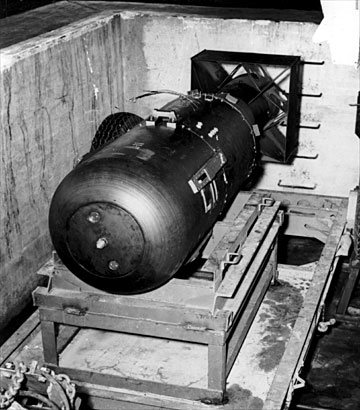THE DROPPING OF ATOMIC BOMB ON HIROSHIMA AND NAGASAKI BROUGHT AN END TO WORLD WAR II, BUT AT A TERRIBLE PRICE TO HUMANITY.
LITTLE BOY AND FAT MAN

On August 6 Operation Centerboard began. A B-29 bomber name Enola Gay, after the mother of the pilot, Colonel Paul W. Tibbets, took off from the Mariana Islands, in the Pacific Ocean, for the city of Hiroshima, where bombardier Major Thomas Ferebee released an atomic bomb code-named Little Boy. The tail gunner, who witnessed the explosion from 10 miles away as Enola Gay returned to base, voiced a thought that would be echoed around the globe: " My God. What have we done?" The city was vaporized, nearly 1000,000 people were killed instantly, and up to 250,00 died of burns and radiation sickness, some of them years later.
 |
| Japanese surrendering on the USS Missouri |







No comments:
Post a Comment